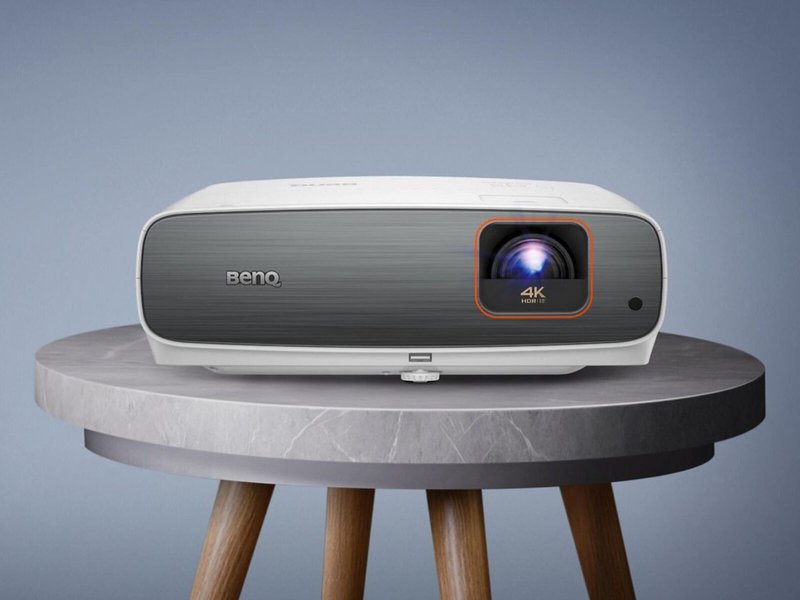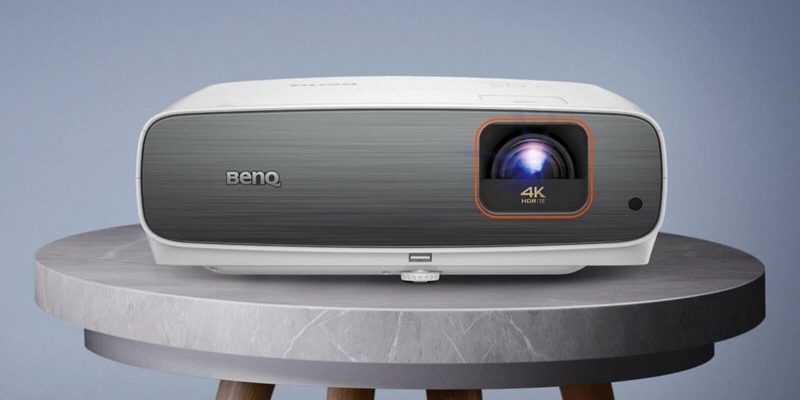
Here’s the thing: using a Benq projector remote with your projector isn’t rocket science, but it does help to know what every button is for, how to pair it, and what to do when things stop working. The truth? It’s mostly about patience and a little know-how — sort of like learning to use a new phone, except this one doesn’t buzz in your pocket every five minutes. Let’s break down exactly how these remotes work, how to get the most out of them, and troubleshoot those moments when your projector seems to stop listening to you.
Meet Your Benq Projector Remote: What It Actually Does
Have you ever looked at a remote and thought, “Who needs this many buttons?” That’s the vibe with a Benq projector remote. But each button has a purpose, even if it’s not immediately clear. At its core, this remote gives you full control over your projector without making you get up every time you want to change a setting. That’s a lifesaver during presentations or movie nights.
Most Benq remotes are designed with a straightforward layout: there’s a power button, volume controls, source selector, navigation arrows, and quick access buttons for things like keystone correction or aspect ratio changes. The magic here is convenience. Instead of touching the projector (which is usually ceiling-mounted, high up, or just out of reach), you get to sit back and command the action from your seat. If you’ve ever had to stand on a chair just to hit a button, trust me, this remote is your new best friend.
Honestly, there are times when the remote feels even more important than the projector itself! Whether you’re dimming the image for an unexpected sunny day, switching from your laptop’s HDMI to your gaming console, or just muting the audio when the phone rings, the Benq remote puts all the power in your hand—literally. It’s surprising how often you’ll use functions you never thought you needed, like freeze frame or quick blank.
How to Pair and Sync Your Benq Projector Remote
So, you’ve unboxed your Benq projector and the shiny new remote. Now what? You might be wondering if you need to pair or sync the remote to the projector, like you would with Bluetooth headphones. Good news: most Benq projector remotes use simple infrared (IR) technology, which means there’s usually no complicated pairing process — just point and press. But, let me explain what you should know so you don’t get tripped up.
First off, make sure nothing is blocking the line-of-sight between the remote and the projector’s IR sensor. If you’ve got a soundbar, decoration, or even just a glass of water in the way, the signals aren’t going to get through. For most models, you just pop batteries into the remote, aim it at the projector, and you’re good to go. Easy, right?
There are a few Benq models (especially newer or higher-end ones) that support wireless or Bluetooth remotes. With these, you might need to follow a quick sync process. Typically, it’ll involve holding down a specific button on the remote as you power on the projector. It’s a painless process, but check your projector’s manual if you’re not sure. The main takeaway? If your remote isn’t working, try new batteries and check for obstructions before you panic about “pairing” issues.
Troubleshooting Benq Projector Remote Problems
Let’s be real: all remotes act up sometimes. Maybe your Benq remote just won’t respond, or the projector seems to ignore you like a teenager with headphones on. Here’s a run-through of the most common issues — and how to fix them without calling customer support or throwing the remote across the room.
Batteries are the most common culprit. If your projector stops responding, swap the batteries out for fresh ones (and double-check they’re facing the right direction). It sounds simple, but honestly, it solves more problems than you’d think. Another trick: clean the battery contacts inside the remote with a cotton swab if they look corroded or dirty.
Obstruction is the next thing to look for. IR signals need a clear path. Even a glass coffee table or a potted plant can block the signal, so make sure you’ve got a direct shot at the projector’s sensor. If you’re mounting your projector on the ceiling, try aiming the remote from several different angles.
Resetting the remote or projector can sometimes kickstart things back to life. Unplug the projector from power, wait a minute, and plug it back in. Most Benq remotes don’t have a “reset” button, but removing the batteries and pressing every button for a few seconds can discharge residual power and clear up weird glitches.
If your remote’s still on strike, you’re not alone — consider grabbing a universal remote as a backup. Often, they work just as well, and setup is usually painless.
Exploring Benq Remote Codes (For Universal Remotes & Replacements)
You might be thinking, “What if I lose my Benq projector remote altogether?” It’s a valid worry — remotes have a habit of disappearing into couch cushions or getting claimed by the family dog. That’s where remote codes come into play, especially if you plan to use a universal remote as a backup.
Most universal remotes come with a thick booklet (or online database) full of codes for every major projector brand, including Benq. These codes tell the remote how to “speak” to your projector. Typically, you’ll enter a code using the remote’s setup mode, then test if the projector responds. If it doesn’t, there’s usually a few alternate Benq codes you can try.
Here’s the kicker: Not every feature may work perfectly — sometimes, only the basic functions like power and input select are supported, while menu navigation or special settings might not be. But for everyday use, a universal remote with the right code can save your movie night. Keep your original Benq remote handy for those deeper setup menus if you can.
Replacing or Upgrading Your Benq Projector Remote
Accidents happen. Maybe your Benq remote took a tumble, got soaked in coffee, or just vanished into thin air. The good news? You’re not doomed to using awkward buttons on the projector itself. Replacing your remote — or even upgrading to a more advanced version — is totally possible.
Start by checking Benq’s official website or customer support. They usually offer genuine replacement remotes by model number. Enter your projector’s model code (found on the back or in the manual), and you’ll see compatible options. If the official replacement is out of budget or unavailable, third-party sellers on sites like Amazon often carry remotes designed for Benq projectors. Just double-check that the model matches; remotes are not always universal across all Benq units.
Some users choose to level up altogether, picking a programmable universal remote. These allow you to control multiple devices (think projector, sound system, Blu-ray player) from one controller. It’s a convenience upgrade that’s hard to give up once you’ve tried it. Personally, I love anything that means one less remote floating around my living room.
Deep Dive: Features You Might Have Missed on Your Benq Remote
A lot of people use their Benq projector remote just to turn the device on, adjust the volume, and maybe switch inputs. But honestly, there’s a treasure trove of features hidden in that slim controller that can really upgrade your viewing experience. Let me walk you through a few.
- Keystone correction: This straightens out the image if your projector’s tilted (no more trapezoid shapes on movie night).
- Freeze frame: Pauses the current image, which is super useful if you’re giving a presentation and want to discuss a particular slide.
- Blank screen: Instantly blacks out the image, great for pausing attention during a meeting or keeping little ones from watching when they shouldn’t.
- Aspect ratio toggle: Swaps between 4:3, 16:9, and other ratios to match whatever you’re watching. Ever wondered why that movie looks weird? This fixes it.
- Navigation buttons: Help you cruise through menus for color settings, input selection, and more, often faster than using the buttons on the actual projector.
It’s honestly wild how much you can control from that one little device. Once you get comfy, you’ll wonder how you ever lived without tweaking the picture just so or instantly muting the sound when the dog barks at the door.
Benq vs. Universal Projector Remotes: Pros, Cons, and Which Should You Use?
So, you now know you can use the Benq projector remote or swap it out for a universal model. But which is actually better? Here’s my honest take.
The Benq projector remote is built specifically for your projector — every button is mapped perfectly to your device, and all the special features (like digital zoom or advanced settings) are guaranteed to work. If you want the smoothest, most reliable experience, original is often best.
Universal remotes, on the other hand, are all about flexibility. They’re amazing if you juggle multiple devices or want one remote to rule them all. The downside? Sometimes, you lose access to those advanced or proprietary functions unique to Benq projectors. For most people, a universal remote will handle the basics, but if you’re a power user or care about deep adjustability, stick with the brand remote.
Here’s my rule: Keep your original Benq remote for setup and troubleshooting, and use a universal remote for daily use if you prefer less clutter.
Keeping Your Benq Projector Remote In Top Shape
Taking care of your Benq projector remote might sound boring, but a little attention goes a long way. Remotes can last for years if you treat them right. Plus, avoiding sticky buttons and lost battery covers saves a lot of headaches down the road.
First up, always store your remote somewhere safe — ideally on a coffee table, shelf, or even mounted on the wall with a little Velcro. Keeping it off the floor means fewer drops and less risk of a tragic meeting with a spilled drink. If the buttons start to stick or get grimy (hello, popcorn hands), just wipe them down with a soft, damp cloth or a disinfectant wipe.
When changing the batteries, swap them in pairs and use a good quality brand — cheap batteries sometimes leak and corrode the contacts, which is a recipe for disaster. If you’ll be away and not using the projector for weeks, pop the batteries out so they don’t drain or leak inside the remote.
And if you notice laggy buttons or the remote acting weird, clean the battery contacts gently or give the remote a soft tap in your hand — sometimes dust finds its way inside, messing with the contacts.
Wrapping Up: Confidence With Your Benq Projector Remote
Getting the hang of your Benq projector remote isn’t some secret club only the tech-savvy can join. Really, it’s about understanding what all those buttons do, knowing how to fix the little hiccups (hello, dead batteries), and realizing you’ve got options if the remote ever goes missing. With just a bit of practice and a few gentle reminders (keep the batteries fresh, don’t block the IR sensor), you’ll be running movie nights, meetings, and game days like a pro — all from that trusty little controller. Here’s to fewer headaches and more smooth viewing experiences, whether you’re team Benq original or have made friends with a universal backup.
